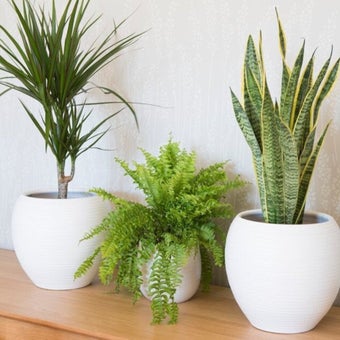
Quick facts
Tap into the health and wellbeing benefits of wildlife gardening by
listening to birdsong
letting the sounds of a bubbling fountain or swishing grasses wash over you
walking barefoot across a lawn, feeling the sun on your face or running your hands through soft grass
taking five minutes to observe a bee or butterfly visit a flower
finding a quiet spot in your garden or local green space and concentrate on your breathing
sharing your experiences of nature with friends and neighbours
Can gardening for wildlife help our health and wellbeing?
Experience among those who practise wildlife-friendly gardening would suggest the answer is ‘yes’ and there is increasing evidence to back this up. Let’s look at why this might be.
Or, if you just want to get straight into feeling the benefits, jump to the sections below where you'll find some practical tips and excercises!
Biophilia and Nature Deficit Disorder
Humans (Homo sapiens) like all species have evolved with a long and close connection to the world in which they live. It is only in the last few decades (so very recent human history) that we have become more distanced from the natural world, the balance tipping towards urban living, where the built environment or ‘grey infrastructure’ dominates. What is referred to as the ‘biophilia theory’ proposes that humans have an innate affinity towards and need of the natural world. In short, we have a predisposition towards nature.
When deprived of this connection – perhaps through spending too little time outdoors or in an environment where we don’t interact with nature - it can impact negatively on our health and wellbeing. This is referred to as Nature-Deficit Disorder, a term coined by author Richard Louv in 2005 in his book Last Child in the Woods: Saving Our Children from Nature-Deficit Disorder.
Two theories and the healing power of nature
Stress Reduction Theory (SRT) was developed by Roger Ulrich. In a well-cited study published in 1984 he found that patients in a hospital who could look out of a window onto a natural setting recovered faster from surgery, required less pain-relief and were nicer to their carers than patients whose windows looked onto a brick wall. In a later experiment subjects watched a stressful movie followed by a videotape depicting either a natural or urban setting. Encounters with unthreatening natural environments led to the best stress recovery. Just think, being able to simply see our gardens, spy greenery around a window or watch birds come to a window-feeder could help us recover from stress and tap into the healing power of nature during times of illness or being house-bound.
The second theory – Attention Restoration Theory (ART) – has become one of the most influential theories on the benefits of nature for health and wellbeing. In papers published in 1989 and 1995, Stephen and Rachel Kaplan developed a theory based on the restorative benefits of nature. Natural environments are considered rich in the elements needed for people to overcome mental fatigue with restorative experiences. The type of experiences which evoke a sense of ‘soft fascination’ – for example, watching a butterfly flap its wings or noting how the wind catches the leaves in the trees – brings you into the present, leaves room for thought and self-reflection. These responses are associated with restoring our capacity for what is called ‘directed attention’, meaning our ability to focus on something even if it not very captivating. So just by spending time in or looking at nature will help you feel mentally refreshed, improving your concentration and reducing stress and anxiety.
Redressing the balance

Accessing nature: Perhaps the first way to help people reconnect with nature is to ensure we have access to the natural environment. This means designing plenty of high quality green space, both public and private into our towns and cities. This might be communal areas such as parks, community gardens, allotments and nature reserves or planting a container or cultivating your garden to benefit nature. It also means trying to reverse the trend for paving over front gardens.
Be inspired by some design ideas for front gardens which leave space for nature.
Connecting to nature while young: We should look at ways to provide children with more opportunities to discover, experience and interact with nature. This might mean ensuring as many schools as possible have a garden or wildlife area. Reviving the ‘nature table’ in classrooms. Creating ‘natural play’ spaces outdoors. And encouraging greater participation in Forest Schools, designed to offer creative outdoor learning in a wooded or other natural green space.
Experiencing nature on our doorsteps: And, of course, the act of gardening with wildlife in mind is an excellent way of building a close and meaningful connection with the living world. It can connect you more closely with the seasons, provide a great sense of satisfaction and enjoyment to see that your actions – such as choosing pollinator-friendly plants, or adding a bird bath – really benefit nature. But just as importantly, it allows us to gain restorative benefits. Taking time to observe wildlife in our gardens helps distract us from daily hassles and lets our brains rest from cognitive tiring activities. Spending just a little time each day in our gardens, especially when paying attention to the wildlife we share them with, is an incredibly effective way to recharge our mental and emotional batteries.
Download our lovely Wild About Gardens booklets to help you and your family learn about the wildlife in your garden.
Top Tip
Nest box cameras reveal the secret lives of your garden wildlife - why not waste an hour or two enjoying 'Nestflix'?!
Practical ways we can reap the benefits

It’s easy to tap into the physical and mental rewards wildlife gardening can bring. Where possible, try to make it part of your general routine. We all need a break from the rush of life and what better way to do it than to help wildlife at the same time.
5 Ways to Wellbeing
- Be Active: Do some gardening, head down the allotment or go outside for a walk in your your nearest park or nature reserve
- Connect: With the people around you, share your wildlife experiences
- Give: Do something to help your local area and the people and wildlife that live there
- Notice: The everyday wildness on your doorstep, from ‘weeds’ to bees
- Learn: Try something new outside – find out how to identify that or bird song, or have a go at making a bee hotel
Top Tip
Join our Wild About Gardens Facebook community to share your wildlife experiences and tips on connecting with nature
Let ‘wildfulness’ be mindfulness
Help reconnect yourself with nature with the mindful exercises below.
Exercise One – ‘Breathing with the breeze’
- Find a quiet spot near to some trees or tall grasses and sit or lie so you are in contact with the ground or a garden seat. Use a cushion or rug to be sure you are comfortable.
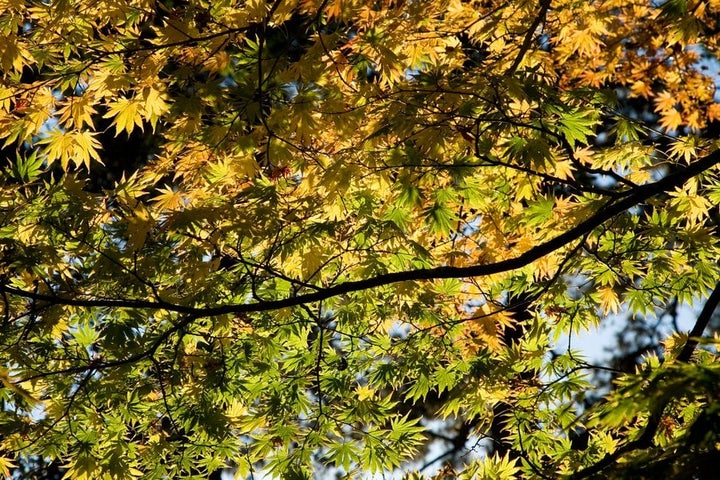
- Close your eyes and notice the touch of the earth beneath your feet or where your body touches the seat.
- Listen to the sounds around you. The wind, leaves rustling or singing birds.
- If you feel tense, close your eyes and take a breath. Breathe in (count to four) and out (count for seven), releasing the out breath very slowly with a feeling of ‘letting go’.

- Finish by dropping all effort and just enjoy being there, doing nothing, letting the sounds of your garden wash over you.
Breathing deeply and listening to natural sounds is a simple way to reduce your heart rate, stress and build mental resilience. And if you learn a birdsong or two along the way, fantastic!
Exercise Two – ‘Take a walk on the wild side’
- Go into the garden or a public space and find a spot where you can safely go barefoot. A lawn is a good place or a mossy patch, textured pathway or bed with bare soil, provided there are no sharp stones or flints.
- Move any obstacles such as pots or washing lines out of the way.
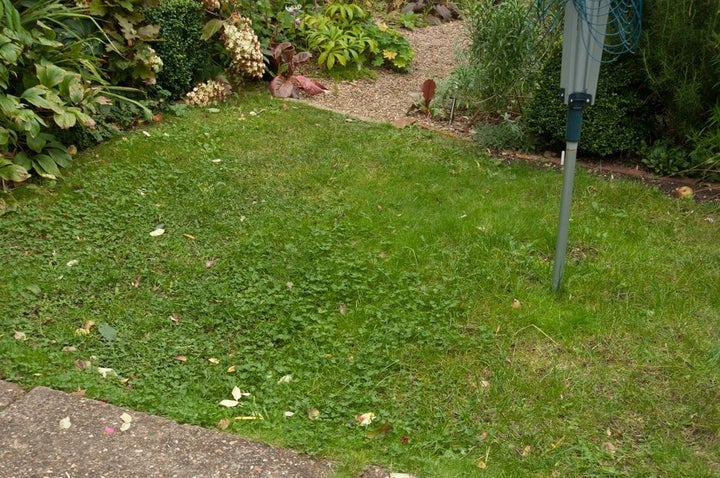
- Take off your shoes and socks or wear thin-soled shoes.
- Stand with your feet hip-width apart and soften your knees.
- With eyes softened, notice what it feels like to have your feet in contact with the ground. Is it hard or soft? Cold or warm? Smooth or uneven? Wet or dry? Crunchy or quiet?
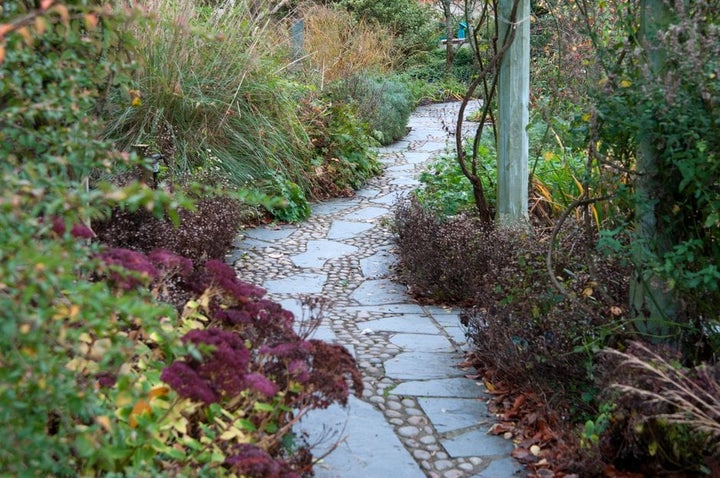
- Now slowly begin to take a step forward. Be aware of how it feels to transfer your weight from one foot to the other. Place your front foot down on the ground very thoughtfully, taking in all the sensations this brings.
- Continue to move slowly from one foot to the next, either in a straight line or in a circle, moving in a mindful way and considering all the wonderful life that is in the soil below your feet.
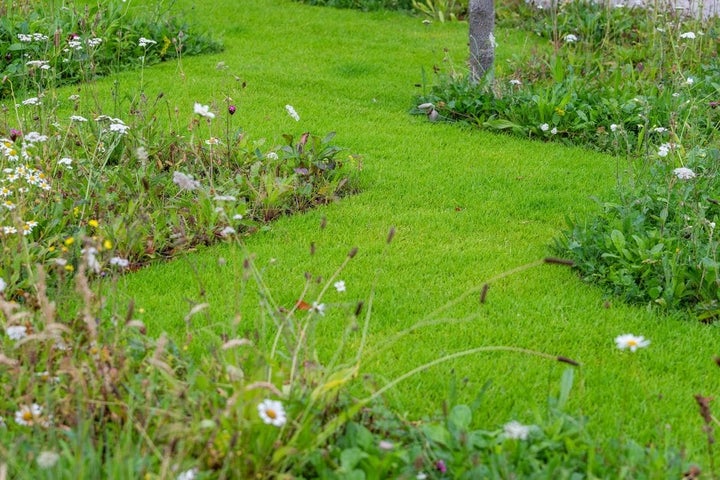
- Finish by standing still, noticing how you feel and taking in any sounds of nature around you.
Moving mindfully is a wonderful way to bring your attention down into your body and help you feel grounded.
Exercise Three – ‘Bee enthralled’
- Head outside on a sunny, calm day.
- Try to find some flowers which are attracting attention from pollinating insects such as bees, butterflies and hoverflies – good examples include fruit trees, hellebores, foxgloves, scabious, globe thistle, lavender and marjoram.
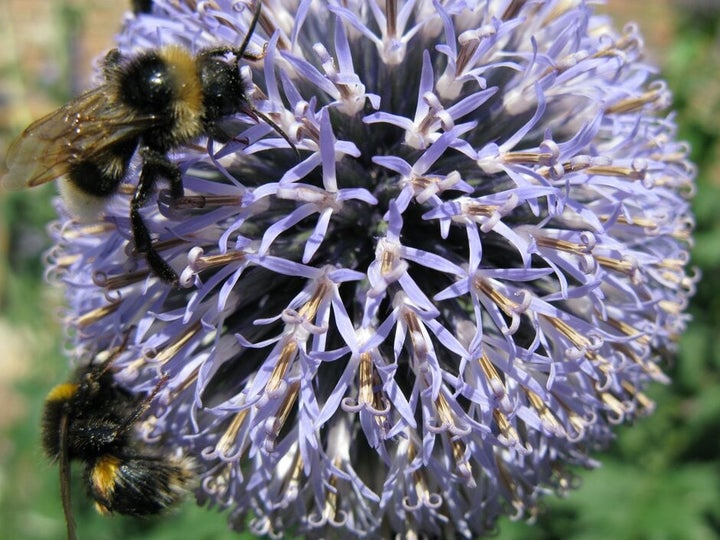
- Get into a comfortable position so you can stay still and watch a flower or group of flowers closely.
- When the next bee or other insect visits a flower, give it your full attention. Note how it moves, what shape it is, what colour or colours it is, if it is hairy or smooth. Does it move quickly or slowly? Does its colours and texture change as it moves? Can you see any yellow pollen on its body?
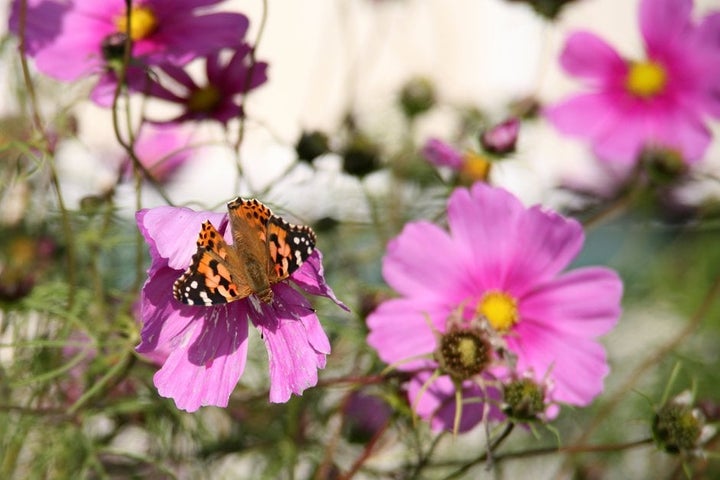
- Also keep your ears open. Is the insect making a noise? Perhaps it’s a high-pitched buzzing or a whirring sound from its wings. Does the noise change as it lands on the flower? Or maybe it makes no discernible sound. This is worth noting too.
- Continue to watch until you have had chance to connect with and enjoy the nature around you.
Paying close attention to these small but living creatures will help keep you in the moment and let your mind ‘reset’ itself. And it’s also a great way to discover more about the wildlife in your garden.




